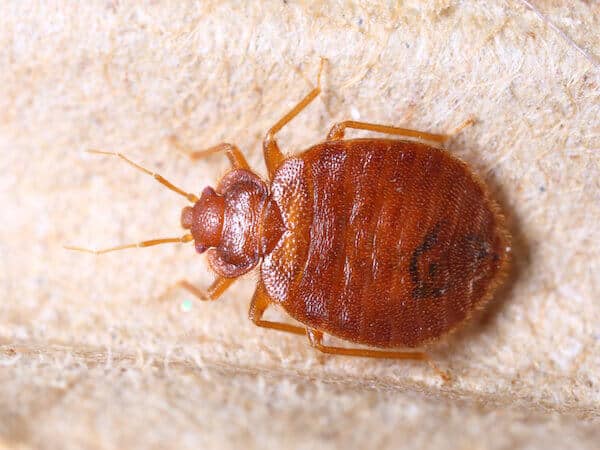As you’ve probably noticed, there are a lot of insects in the world, and each of these insects come with their own specific list of problems. Of the vast variety of bugs in the world, many of them can be considered “biting insects”. And one of the most common biting insects in our area is the bed bug. Understanding how different insects "bite" us and how we react to those bites is helpful in identifying bed bug bites. Let’s take a look at some examples:
When horseflies bite, they use their saw-like mouthparts to cut into the skin. This can definitely be classified as a bite. So this is a good place to start. When a horsefly lands on you, it will saw into your skin and suck out the blood from the newly-created wound. During the process, it will introduce an anticoagulant into the wound. This slows the process of blood clotting and allows this to suck up larger amounts of blood. And the longer it is allowed to bite, the more anticoagulant will be administered into the wound and the more blood they’ll be able to consume.
Have you ever had a bug bite that became red and inflamed or developed a large rash around it? This rash is an allergic reaction to the anticoagulant injected into the wound. And the lower your tolerance to this anticoagulant, the more pronounced the rash will be. You may also have a more severe reaction if you’ve had a lot of this coagulant administered into the wound, as described in the scenario above.
When bed bug infestations begin, it is usually only tiny, immature nymphs that are feeding on your skin. These bed bug nymphs don't administer nearly as much anticoagulant as adult bed bugs. So you may not experience any rashes at all when these bed bugs begin to bite you. However, these bites will become very noticeable over time as multiple adult bed bugs begin to bite your skin while you’re sleeping. The takeaway from this is that bed bug bites don't always look the same. You're not always going to be able to look at a bug bite on your skin and say, "Yup, that is a bed bug bite."
Let’s take a look at another example. When wasps "bite" us, it actually isn't a bite at all. It’s a sting. And it is very painful. You're not likely to get stung by a wasp and not realize it. Bed bugs, on the other hand, can bite you multiple times without you even realizing it. They can bite you and feed on your blood while you're sleeping and not wake you up. When you find these red welts on your skin in the morning, if you notice them at all, you’ll probably be left wondering where they came from. But there is a good chance that you won't suspect wasps. But wasps aren't the only insect that can sting you! Fire ants also sting. And if you or your child has had an encounter with fire ants and forgotten about it, you might mistake fire ants stings for bed bug bites. However, fire ant stings, or any stings for that matter, can easily be distinguished from a bed bug bite because stings will have a bump or blister in the center. This is because venom will cause more of a reaction than anticoagulant.
Another pest that might bite you is spiders. And while you won't have any trouble distinguishing a black widow or brown recluse bite from a bed bug bite, you might have some issues when it comes to the bites inflicted by the common house spider. When common house spiders bite you, it may not be painful enough to wake you. And these bites will only result in a tiny red welt. If you find one or two red welts on your skin, there are two ways you can know that they're not bed bug bites. First, the bites will have the bump in the center. Second, common house spiders have no reason to bite humans, so you'll only receive a random bite now and again. But bed bugs deliberately bite multiple times and these bites are usually arranged in clusters.
The last bites we’re going to take a look at are mosquito bites, which are one of the most common bites that bed bug bites are mistaken for. When you get "bitten" by mosquitoes it is actually more of a poke than a bite. Mosquitoes use straw-like mouthparts to pierce the skin and suck the blood out. But how they bite isn't what we're going to focus on, but rather the fact that they usually only bite once. Since bed bugs bite multiple times, often three times or more, their bites can look like a path on the skin whereas mosquito bites will have more of a random appearance, like your skin is speckled with bites. Clustered bites or bed bug bite paths are the best indication that you're being bitten by bed bugs.
There are a lot of biting insects found in our area, but bed bugs are some of the worst. If you'd like fewer bugs biting you inside your home as well as in your yard, reach out to us at Rottler Pest & Lawn Solutions. We can help get the job done right!


